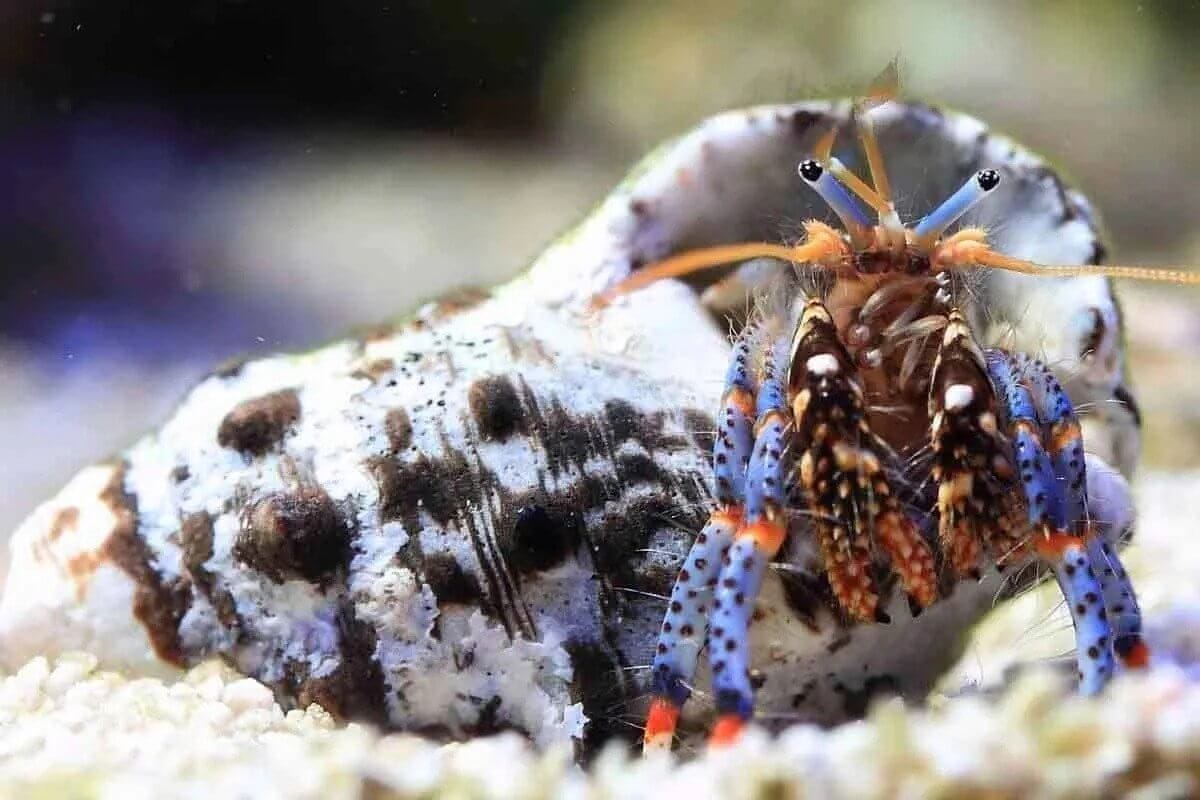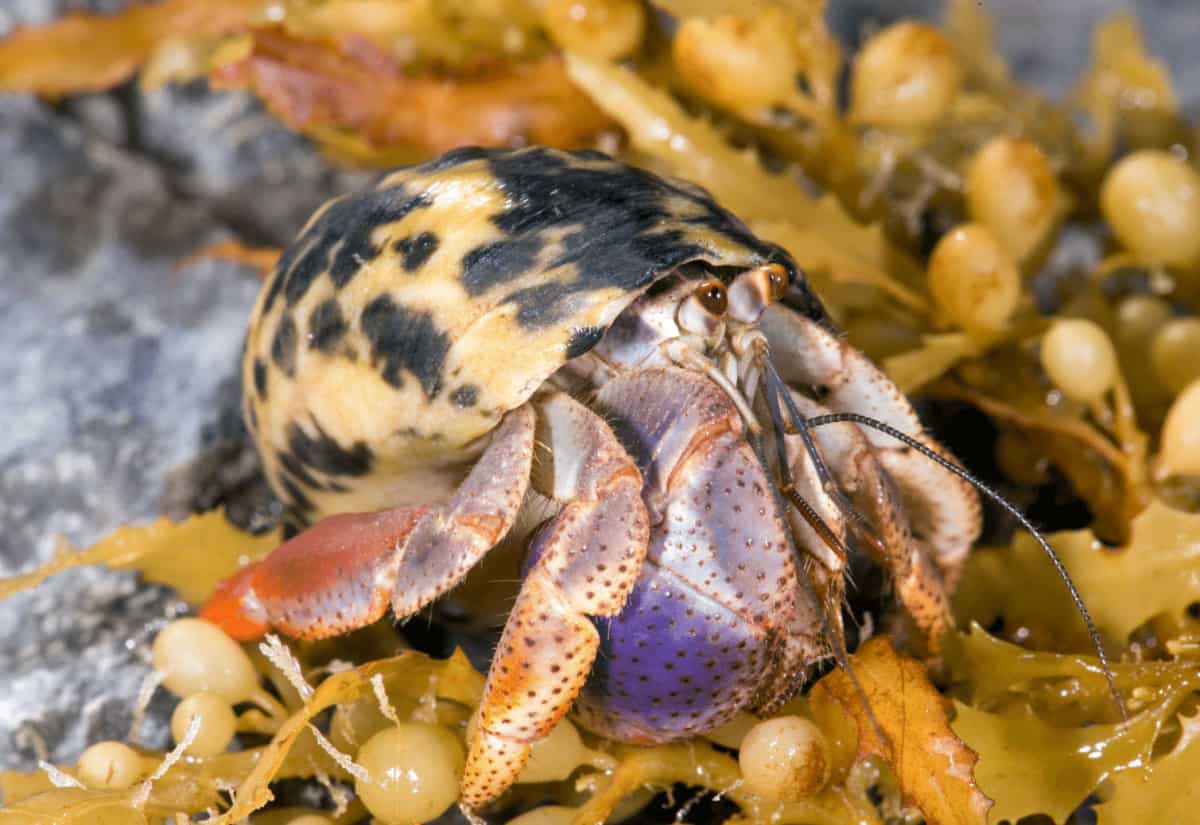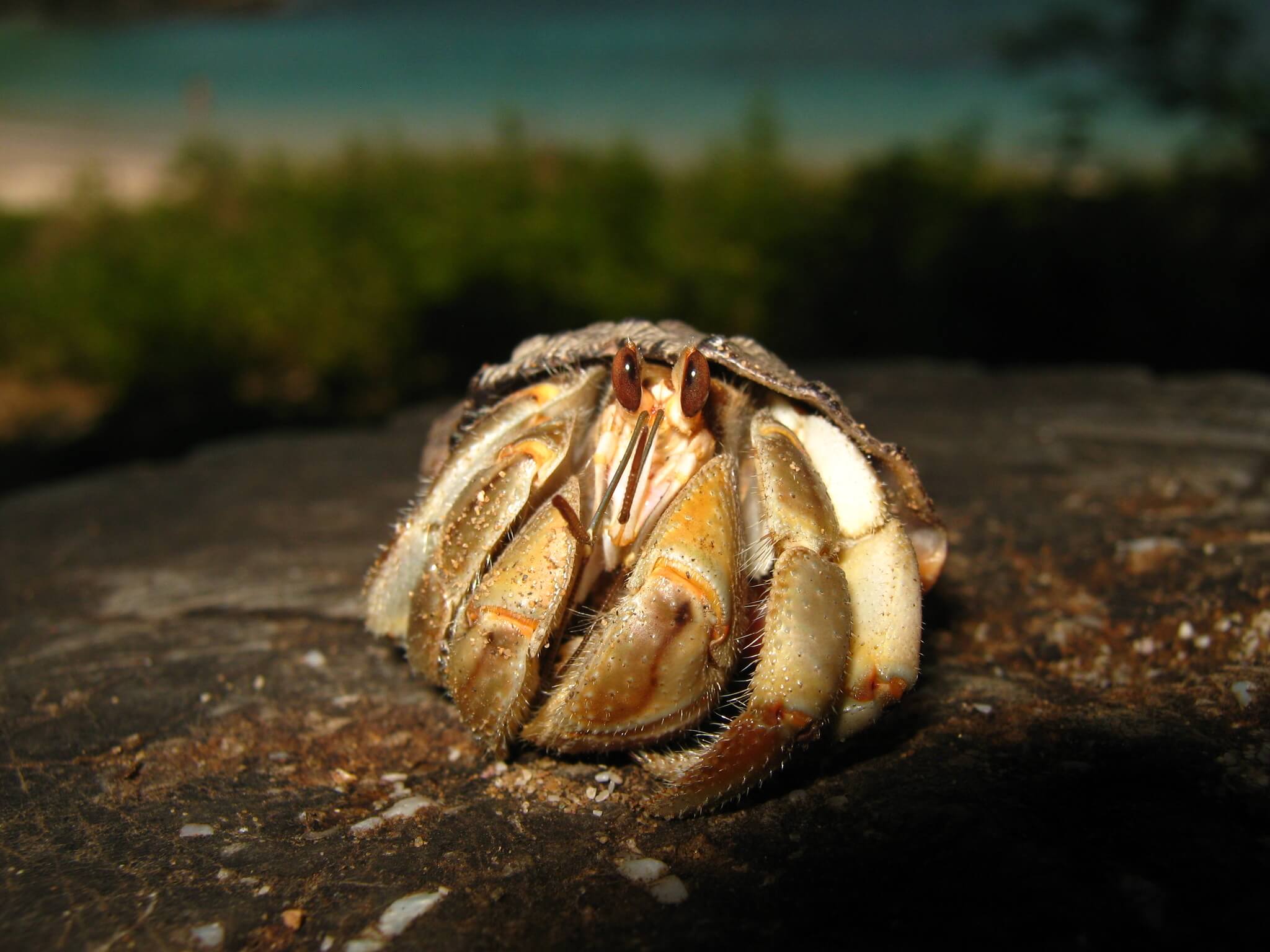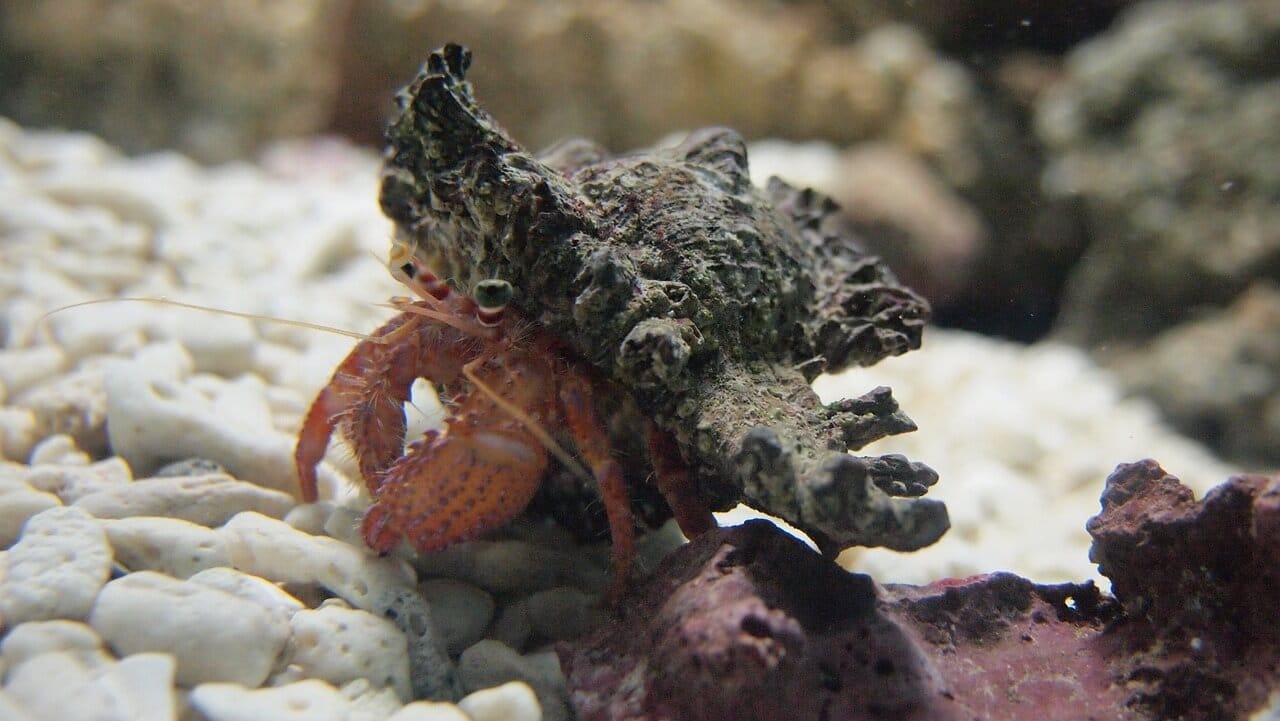
Hermit crabs are nature’s marvel! They are named for their tendency to live in abandoned snail shells, which they use for protection. There are many species of hermit crabs, and they come in all shapes and sizes.
Some species are very small, while others can grow to be quite large.
These interesting creatures make great pets. If you want to know more about them, or if you are planning to get one for yourself, then here is a guide to some of the most popular species of hermit crabs.
Classification
| Kingdom | Animalia |
| Phylum | Arthropoda |
| Class | Malacostraca |
| Order | Decapoda |
| Family | Paguroidea |
| Scientific Name | Paguroidea |
The Blue Leg Hermit Crab (Clibanarius tricolor)

- These little crabs are easily recognized by their bright blue legs, which contrast sharply with their white bodies.
- They are also known as the electric blue hermit crab, and they are one of the most popular species of hermit crab kept as pets.
- While their coloring is certainly eye-catching, it’s their personality that really makes them stand out.
- Blue leg hermit crabs are very active and curious, always exploring their surroundings. They are also very social creatures and love to interact with both their fellow crabs and their human caretakers.
- They are also very good at cleaning up after themselves, so they make great tank mates.
If you’re looking for a fun and lively pet, a blue-leg hermit crab might just be the perfect choice for you!
The Purple Pincher Hermit Crab (Coenobita clypeatus)

- The Purple Pincher Hermit Crab is a species of land crab that is native to the Caribbean and parts of South America.
- These crabs are often kept as pets, and they are known for their striking purple coloration.
- They are relatively small crabs, typically reaching only about 2 inches in size. Their hard shell provides them shelter and keeps their body moist too.
- As their name suggests, Purple Pinchers have large claws that they use for climbing and defense. These claws can also be used to grab food, which these crabs are mostly scavengers. In the wild, Purple Pinchers will eat just about anything they can find, including dead insects and other small animals.
- While Purple Pinchers make good pets, there are some things to keep in mind before getting one. These crabs need a lot of space to roam, and they should have access to both land and water.
The Ecuadorian Hermit Crab (Coenobita compressus)

- The Ecuadorian Hermit Crab is a species of hermit crabs that is found in the coastal regions of Ecuador.
- These crabs are known for their ability to change their shell as they grow, and they are also one of the few species of hermit crab that can be found in both saltwater and freshwater habitats.
- Ecuadorian hermit crabs are typically brown or red in color, and they can range in size from just a few centimeters to over 10 centimeters in length.
- These crabs are omnivorous, meaning that they will eat both plants and animals, and they are often seen scavenging for food on the seabed.
- While Ecuadorian hermit crabs are not considered to be endangered, their populations have been declining in recent years due to habitat loss and pollution.
Passionfruit Hermit Crab (Coenobita cavipes)

- Passionfruit Hermit Crabs are one of the most popular types of hermit crabs. They are easily recognizable by their bright orange coloration and black stripes.
- They are also known for being very active and playful.
- Native to the tropical regions of South America these hermit crabs prefer to live in moist, humid environments and can be found in rainforests, mangroves, near rivers, and streams, or in coastal areas.
- Passionfruit Hermit Crabs are omnivorous animals and will eat a variety of different foods.
- Their diet includes both plant and animal matter.
- Some of the fruits and vegetables that they enjoy eating include passion fruit, mangoes, oranges, apples, grapes, and bananas. They also eat a variety of insects, worms, and other small invertebrates.
Passionfruit Hermit Crabs are popular pets because they are relatively easy to care for and are very interesting to watch. They can live for up to 30 years in captivity if they are provided with the proper care.
Habitat of Various Species of Hermit Crabs
- Hermit crabs live in a variety of habitats, including forests, deserts, and even the intertidal zone. In the wild, they are often found near the seashore, where they can scavenge for food and hide from predators.
- Hermit crabs are not picky about their homes, and will often live in whatever type of habitat they can find. However, they do need access to water, so they are usually found near sources of fresh water.
- They are social creatures and often live in large groups. In the wild, these groups can number in the hundreds or even thousands.
- In captivity, hermit crabs can be kept as pets. They are relatively easy to care for and make interesting and unusual pets.
- Hermit crabs are not natural swimmers, so they need to be kept in an enclosure that has both land and water. The land area should be large enough for the crabs to move around freely, and the water should be shallow enough for them to touch the bottom.
- A hermit crab’s diet consists mainly of scavenged food, such as dead leaves and insects. They will also eat some plant material, and occasionally meat.
Did You Know!

- Hermit crabs are not actually crabs! They are more closely related to lobsters and shrimp.
- There are over 800 species of hermit crab, but the most common pet variety is the Ecuadorian hermit crab.
- Hermit crabs live in shells to protect their soft bodies. They will change shells as they grow and sometimes fight over shells with other hermit crabs. As a result, hermit crabs are constantly on the lookout for new shells, and will often fight with each other over the best ones.
- Hermit crabs are social creatures and do best when kept in groups. In the wild, they live in large colonies of up to 100,000 crabs!
- Hermit crabs are great scavengers and help to keep their environment clean.
- They can live up to 30 years in captivity!
If you’re thinking about getting a hermit crab as a pet you can give them fun names to call them by. Also, be sure to do your research first. Hermit crabs require specific care and housing conditions in order to thrive. But if you’re up for the challenge, these fun facts show that hermit crabs can make great pets!


GIPHY App Key not set. Please check settings